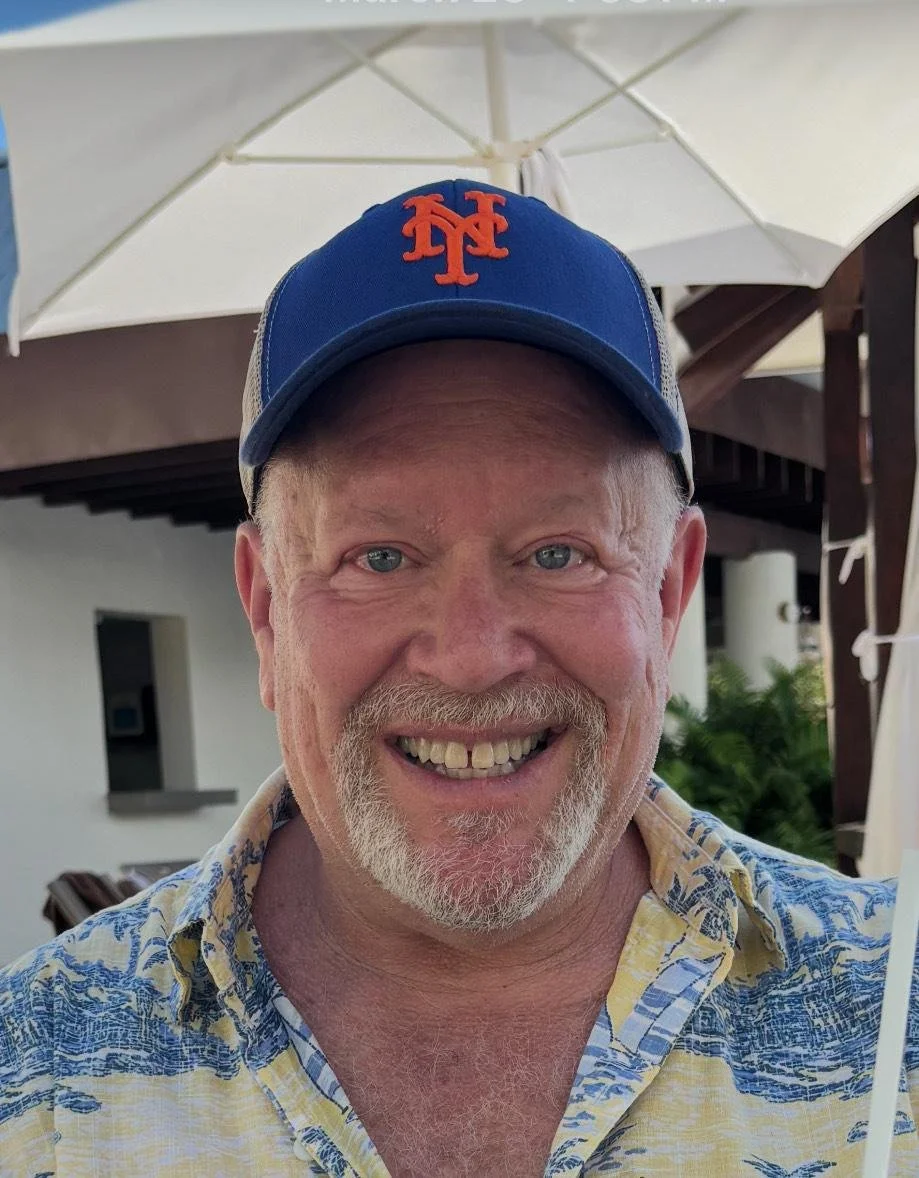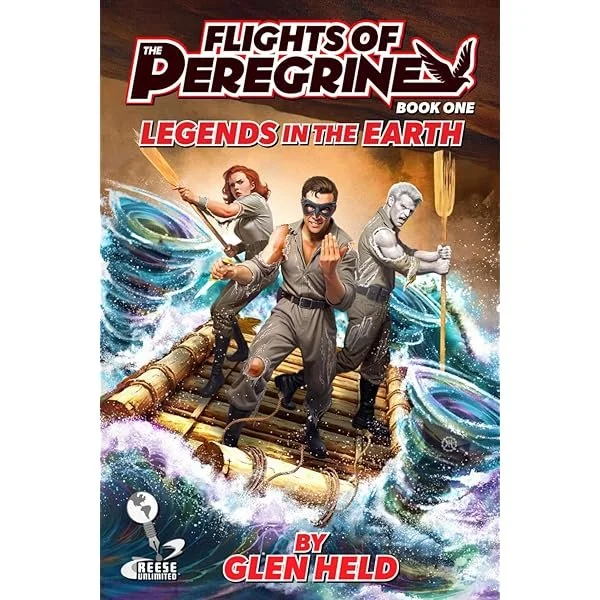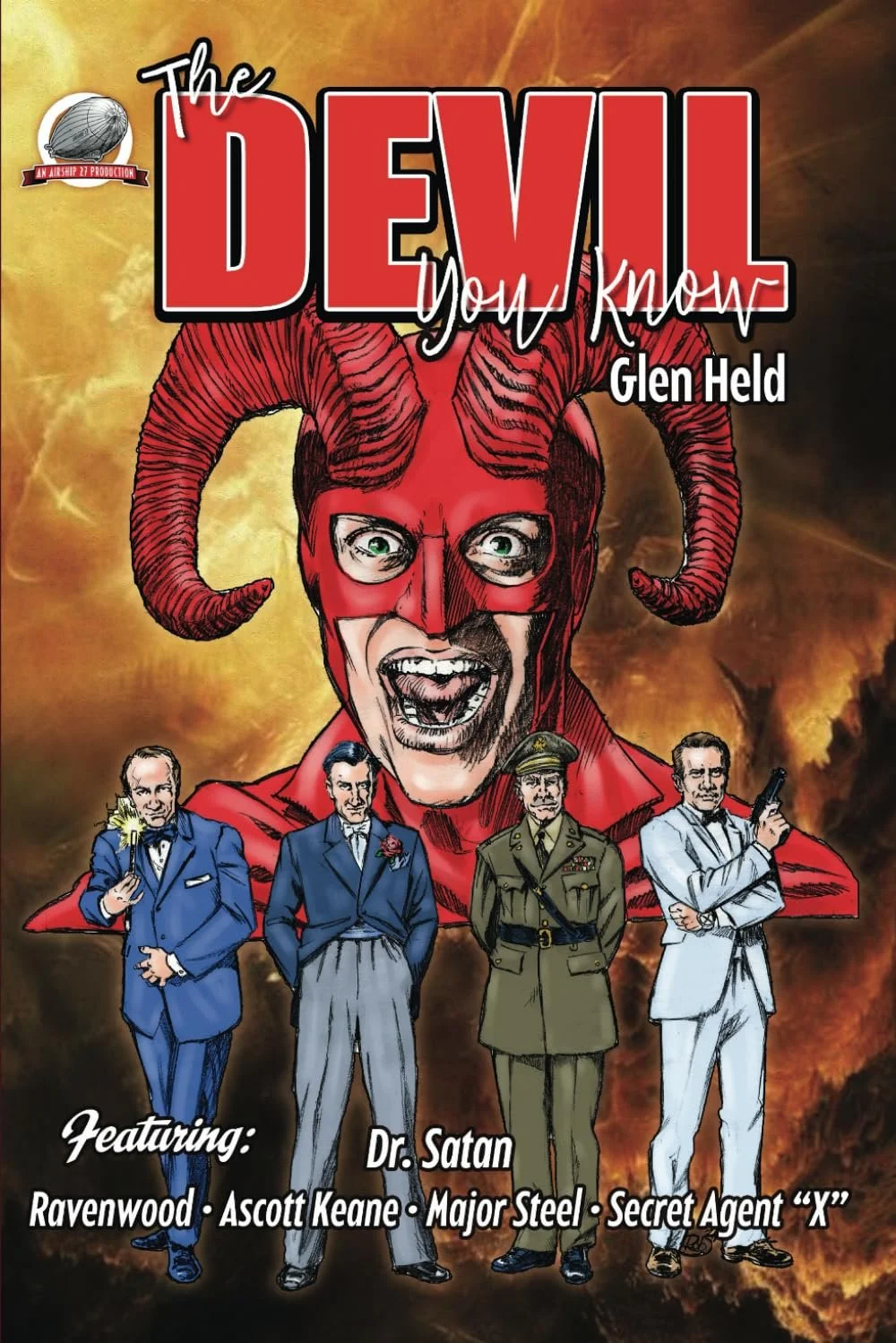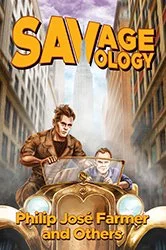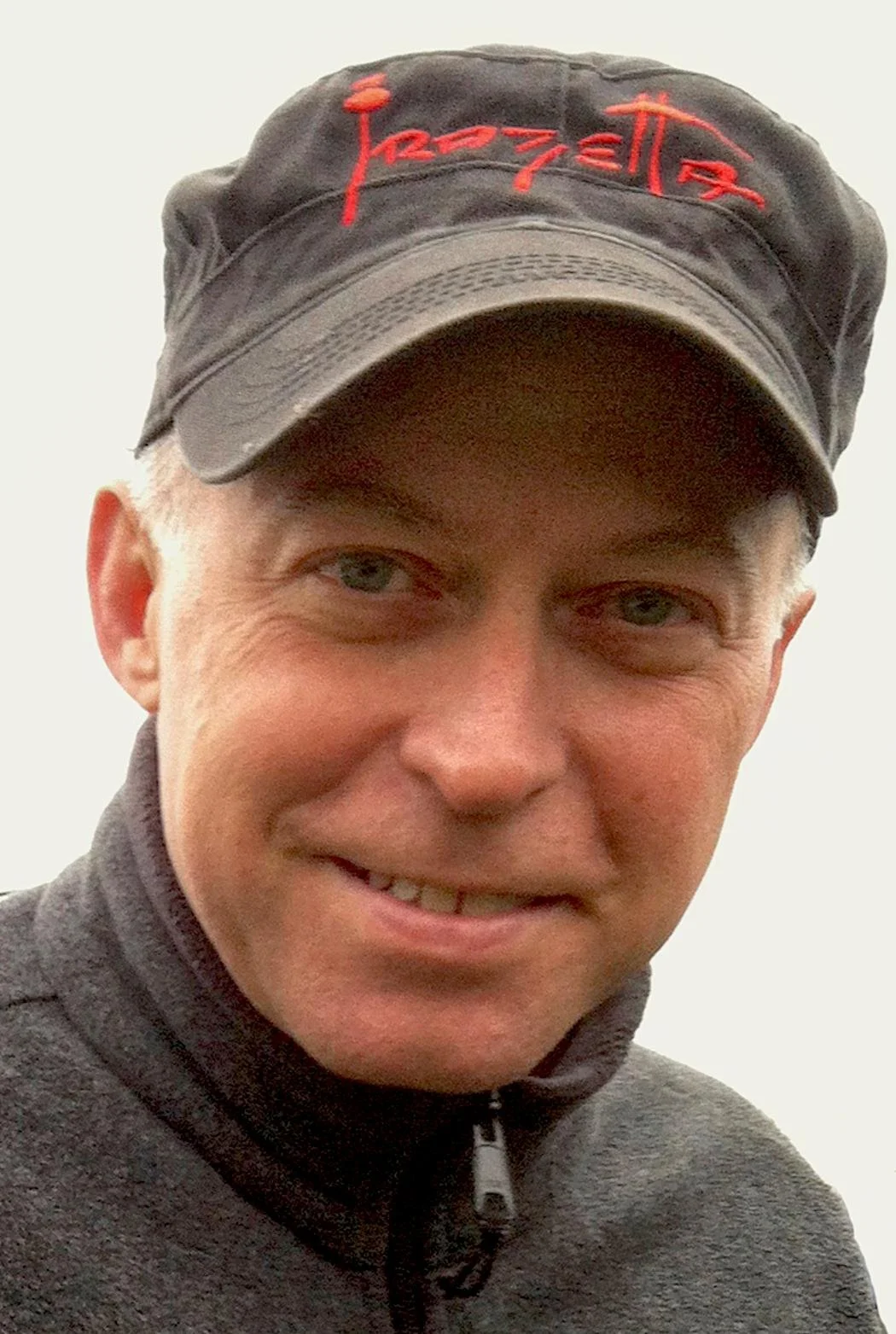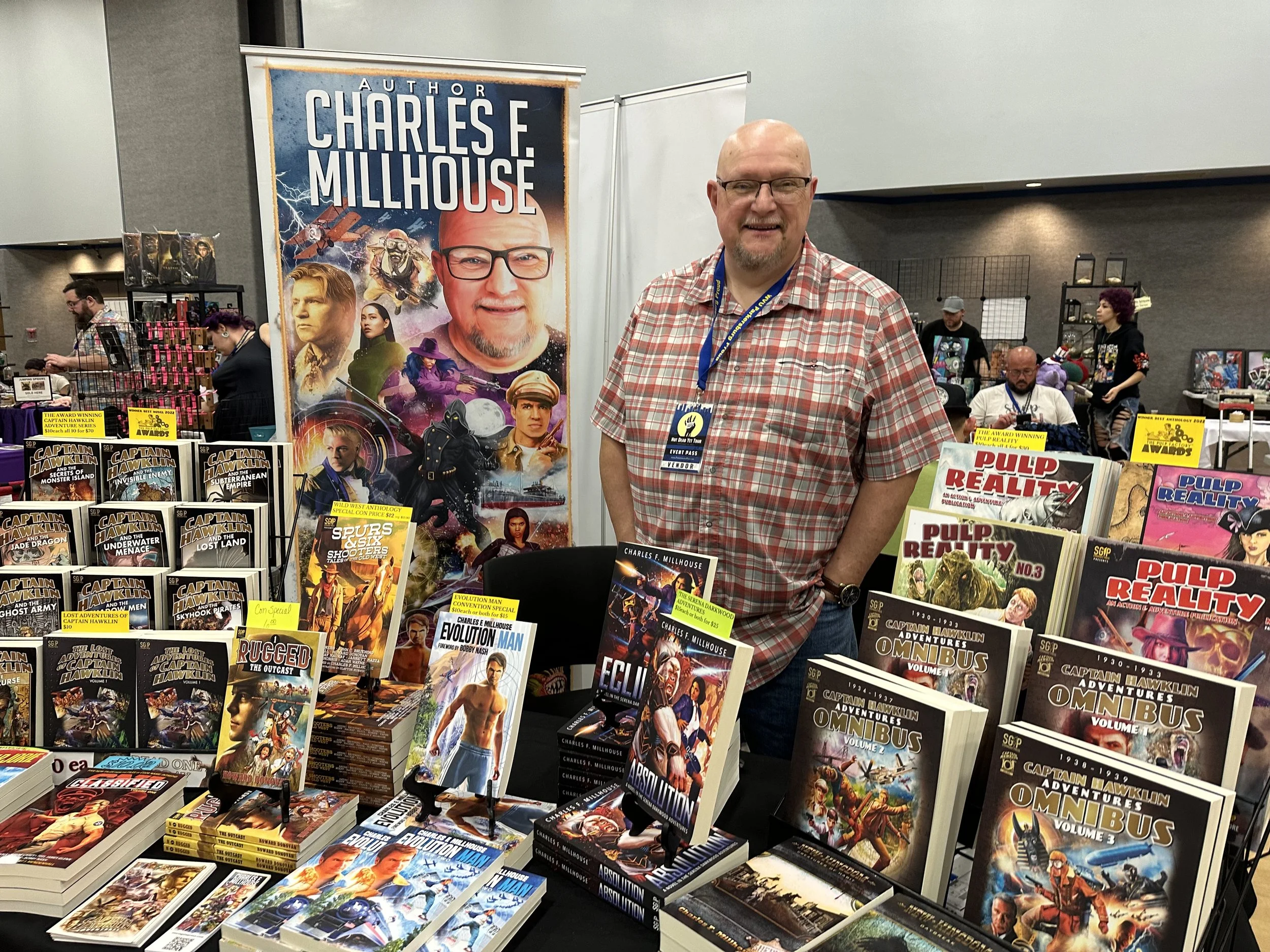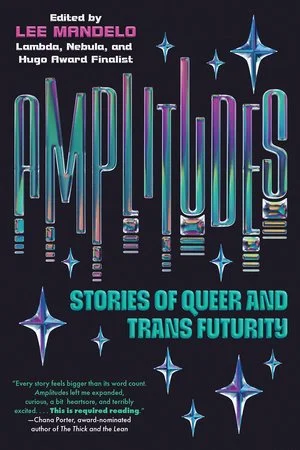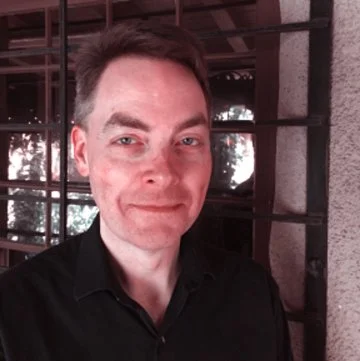Today I chat with author Glen Held. Born on a Monday, Glen Held grew up in Brooklyn, then was unceremoniously whisked off to Long Island where he still resides with his wife Kathy and the fabulous Eddie the dog! His writing credits include the just published 1930's adventure Legends in the Earth, the pulp team-up novel, The Devil You Know, the young adult sci-fi tale Way Out World (all three available on Amazon), The Killer - a short story anthology (available from Gromagon Press) and the mystery/romance novel Burning Secrets (available nowhere.) In addition, he has a number of science fiction and fantasy short stories published in various magazines/anthologies. Glen is retired from a thirty year plus Civil Service career and enjoys travelling as well as watching the Mets - having converted his adult children into fans, thus teaching them the agonies of NY National League baseball.
Hi Glen. Thanks for taking some time to chat with me.
A pleasure!
Indeed — always a pleasure talking to a fellow long-suffering Mets fan!
I’m running this series of interviews as a lead-up to PulpFest, so my first question is: what draws you to the pulp genre?
What drew me to the pulps, what I guess drew most of us, was Doc Savage. It really was a strange circumstance that introduced me to The Man of Bronze. I was in fifth grade and this one kid, who was a bit nutso, raced over to me at lunch, stopping inches from my face. He said he had this book I must read (I learned afterwards, his parents forced him to read a book as punishment for something he did, and he wanted me to give him a summary of it.) It was The Devil’s Playground, one of the Bantam Doc reprints. The cover interested me in it immediately…as did the fact I didn’t want to have to fight him. So I put aside the Foundation novel I was reading, and started the Doc. Even though it’s not a Dent, I was drawn in immediately. From then on, I devoured every Doc I could find. As my neighborhood had a number of antique stores, I went to them hoping to find original Doc pulps. The few I found were way expensive, however I did find other pulps that I could afford and that lead me to other reprints and heroes and…here we are!
Your latest release is Flights of the Peregrine Book One: Legends of the Earth. Tell us a little about the book and how you came to re-launch the character.
This book had a strange journey from the start. A few years back, I saw an ad on the old Pro Se site saying they were looking for authors to write a novel based on Barry Reese’s character The Peregrine. At that time, I had one book published, a romance/mystery printed in 1991, and a few short stories. Fascinated by the art for the character, I came up with a proposal and was thrilled when I was given the okay to write the book! Four months later it was done, and I submitted the finished manuscript. I heard nothing for over a year. I kept contacting the company and was told various things. I had just about given up, when I was contacted by Dale Russell who would be the book’s editor. Together we polished up the story and got it ready for publication. More months passed and I saw various things on the internet which led me to believe Pro Se was in trouble. Eventually I was contacted by them and told, yes, they were going out of business and releasing stories back to their respective authors. However, as The Peregrine belonged to its creator Barry Reese, I would have to work something out with him to use it or change all the names and descriptions. Luckily, Barry was thinking about starting his own publishing company and we worked out a deal bringing Legends out as the first of his Flights of The Peregrine series.
The book itself is a two-part story. The first section deals with establishing the characters and has our good guys fight a truly evil menace that they had inadvertently released. But when the bad guys are defeated, it turns out there’s a bigger bad behind them. Part two deals with The Peregrine, his fiancé, and a surprise from part one, venturing into the hollow Earth with the fate of the world resting on their shoulders. I tried to give the story as many twists and turns as I could, throwing in some easter eggs and cameos, and gave an ending which, I hope, was thought provoking. Once I get some reviews, I’ll know for sure.
Will you be writing further installments? Or is this a multi-author franchise?
There will be at least two more novels in the series, but I won’t be writing them. One of the stories will be written by my friend, J.P. Linde, author of Fool’s Gold. I can’t wait to read his take on the characters Barry allowed me to play with. I suppose one should never say never though as The Peregrine is a great character and I’d be happy to return to chronicle more of his adventures.
Tell us a bit about your other recent novel, The Devil You Know, which came out in 2024. This also has some strong connections to both classic pulps and the “New Pulp” movement, right?
Boy that one was a doozy to write! At the time I started thinking about concocting a story for Airship 27, I figured I’d have a better chance of getting published if the tale had as many public domain characters as possible. Doing my research, I came upon an image that blew me away. It was the cover of the August 1935 Weird Tales with a picture of a red clad, horn masked man with the words “Meet the Sinister and Mysterious DOCTOR SATAN, the World’s Weirdest Criminal” I mean, come on! What could better than to have a character like that as my antagonist?
I immersed myself in all eight Satan stories, feeling a fondness for not only him, but his enemy, Ascott Keane. Although Keane, a minor practitioner of the mystic arts, would be my main hero, he would need help going up not only against Satan, but another villain of my imagination who would be working for the nazis.
Since there would be a decent amount of magic in the tale, I figured Ravenwood, Stepson of Mystery, would be likely to give a hand. So, I read a bunch of his stories. Considering the worldwide scope I had planned, there would have to be a governmental liaison to eventually coordinate the efforts. More research brought Major Steele, a minor pulp character, as that liaison. And, what the hell, why not add a bigger hero into the fray? I looked for someone who wouldn’t overshadow Ascott. When I discovered that the girlfriend of Secret Agent X, the man of a thousand faces, shared the same last name of Keane’s girlfriend, I knew it was fate. (And I also had an easy way of bringing X into the picture when the cousin’s got together.)
After that, I sprinkled in some real-life characters of the time (such as Amelia Earnhardt’s navigator Fred Noonan and the criminal Meyer Lansky) as well as historical places such as the German bund camp in Yaphank on Long Island and, eventually, I had a story. It’s gotten some good reviews (always room for more!) so I think I may have done a good job.
I’d be interested to hear a bit about your writing process. Are you a plotter, a “pantser,” somewhere in-between? Do you have a set writing schedule?
Definitely not a plotter; not even close. Nope. No, sir! I have a vague idea of the story’s beginning and nothing more than that. My chapters are usually a few pages long and end on cliffhangers to get me (and hopefully the reader) excited about what’s to come. After chapter one, I have to spend some time thinking about where to go from there. Usually a new chapter idea comes to me overnight or on a walk with Eddie the dog. It’s really a terribly time-consuming way to write since I have to go back and change the previous parts to agree with any new plot twist. However, writing this way keeps me engaged with the story and I don’t get bored. Frustrated? Yes. Bored? No.
I know you’ve published short stories in anthologies like Atomic Stories, Dead Science, and Spectacular! Spectacular! Does your process for writing short stories differ at all from writing novels?
That depends on what sort of short I’m writing. If it’s someone else’s character – like the ones I’ve written for Code Name Intrepid, the Reese Unlimited Universe, Atomic Stories and the Radio Rita anthology – I have to immerse myself in the character’s established histories. I don’t want to go against anything that’s already established or have the characters behave differently than readers of the series are used to. Completely new stories require a different kind of research as I try to make my stories believable in their unbelievability. Like for my story ‘At His Hands’, which featured John Wilkes Booth and Dr. Samuel Mudd (‘Hands’ appeared in Freedom Fiction Journal) I read everything I could about the aftermath of the Lincoln assassination and visited both Mudd’s house in Maryland and Ford’s Theater. (Actually, I would have gone to those places anyway as history fascinates me.)
Finally, do you have anything in the works that readers should keep an eye out for?
Thankfully, I do! Currently, I’m writing a Lazarus Gray story for a Barry Reese anthology as well as a tale bringing a version of The Shadow into the Doc Talos universe. I’m just starting to write a sequel to my book The Devil You Know, available on Amazon (plug, plug) with what I hope is a really cool idea that I just got on a walk with Eddie. In it, Doctor Satan…well, that would be telling.
At the moment, I have a young adult book making the rounds at a number of agents and another I’ve written about 10,000 words of that I’d like to finish. I also have a story in Robert J. Mendenhall’s Code Name Intrepid anthology coming out mid-August as well as a Radio Rita short to be published later this year by Airship 27.
I’d like to write a mainstream novel, but I’m still hunting for that one great idea. I think Eddie and I are going to have to start taking much longer walks!
Thanks again Glen! See you at Pulpfest!
Readers, it is not too late to register for and attend Pulpfest 2025 (THE pulp magazine-focused convention in the Northeast) and the other three conventions it hosts: FarmerCon (dedicated to the works of Philip Jose Farmer), ERBFest (dedicated to the works of Edgar Rice Burroughs) and DocCon (dedicated to all things Doc Savage related). Check out the Pulpfest website for registration and hotel information!
